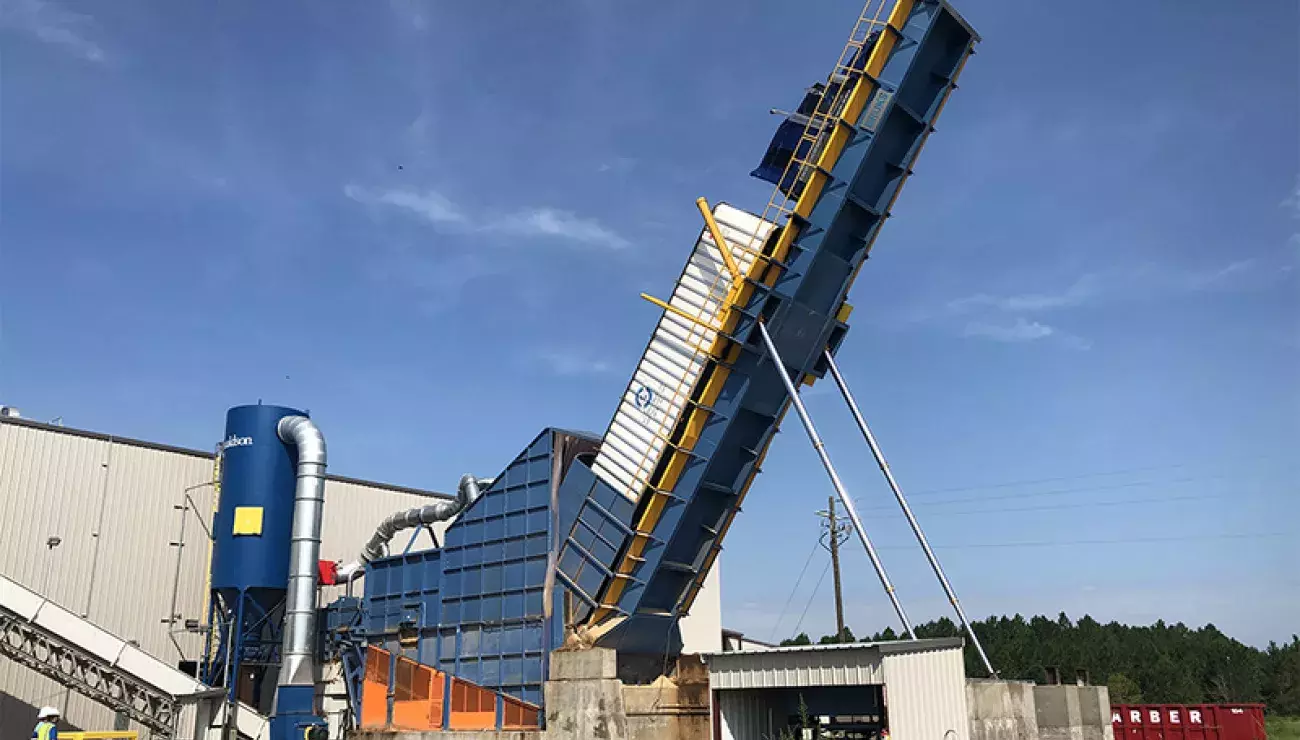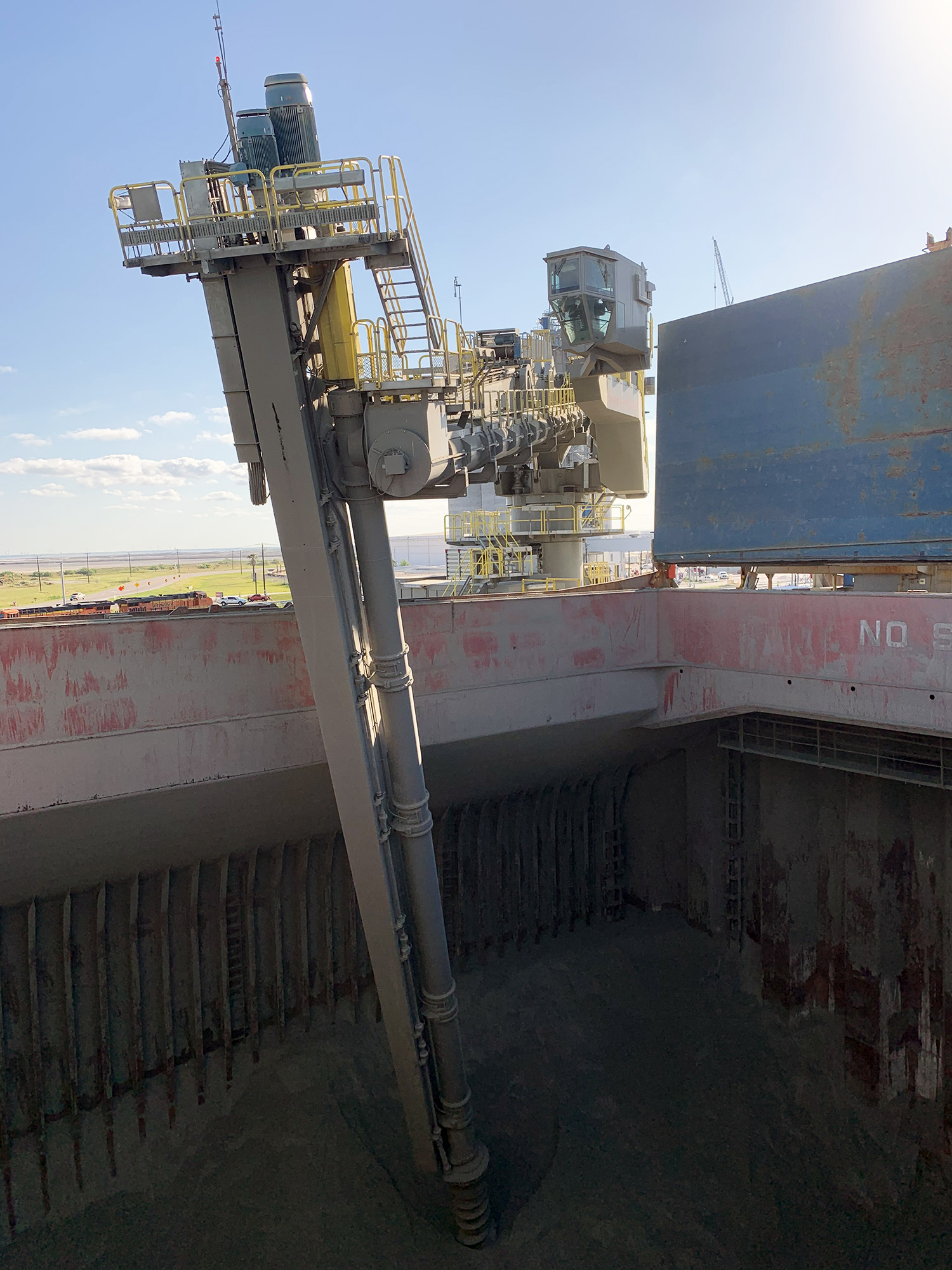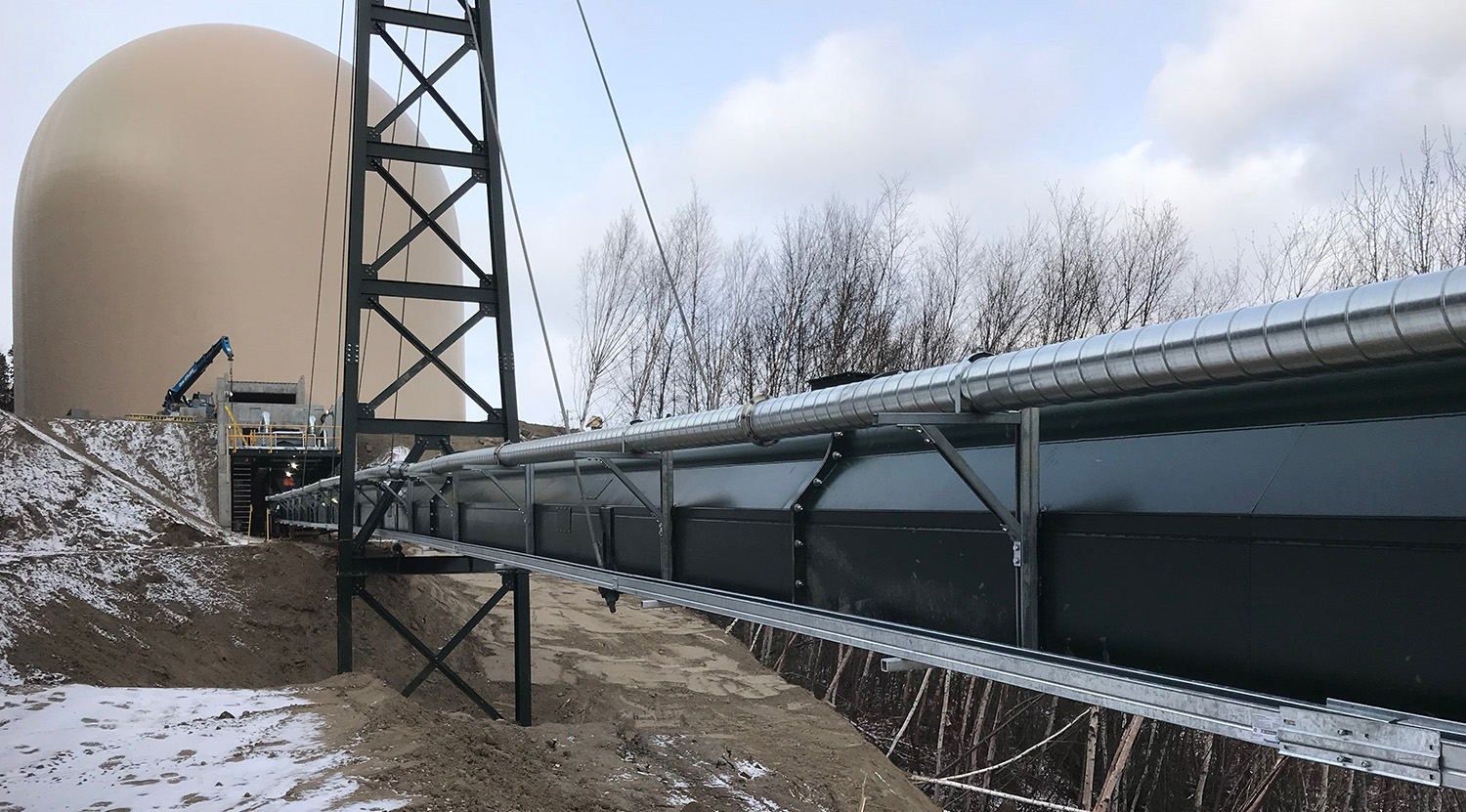
Dust control: don’t let particulates get you down
14 Apr 2021Sometimes the smallest elements generate the largest problems. In addition to the conscious decision-making policies of environmentally aware companies, increasingly strict local and national environmental regulations over particulate emissions, along with pressure from campaign groups, safety implications and the general nuisance that dust causes to machinery and operations, mean that dust control is high on the agenda.
Every day, we work with dusty dry bulk materials and understand the issues that arise from fugitive dust emissions. Much of our development work and the foundation of many of our technologies has dust control at their very core.
Dust-free operations in port
Do you have an issue with dust during ship unloading and loading operations? Our totally enclosed Siwertell ship unloaders offer dust-free vessel discharges. Dry bulk materials are conveyed from the ship’s hold, through the screw-type ship unloader and onwards onto any type of receiving system. The entire process can be made dust-tight.
The same applies to ship loading. Dust-free operations can be achieved with specially designed loading chutes, to totally customized solutions, which employ dust extraction systems that offer a two-stage air filtration process. These systems take initially filtered air from the dust collector, and pass it through a second filtration unit with special high-efficiency particulate air (HEPA) filters, delivering the cleanest air possible.
The transfer of materials to and from ship loading and unloading equipment on the quay can be as dust-tight as an operator needs it to be with our range of covered jetty belt conveyors.

A cross-industry concern
If you operate away from the quayside, handling dusty or powdery commodities at any number of facilities from sawmills, pellet and pulp and paper plants, the bioenergy and biofuel sectors, particleboard or any form of processed wood board manufacturing, right through to construction and agriculture, our portfolio of equipment offers extensive measures to control dust and its impact on operations and the environment.
Globally, there is a growing need to address environmental concerns about particulate emissions from wood-processing facilities. Reducing environmental impact should be a primary concern, along with safety. Dust not only builds up on machinery surfaces, especially on oiled parts, interfering with equipment function, but it can potentially increase fire risk.
We manage wood dust in a number of ways. For example, wood chips, sawdust, dry shavings and biomass are often transported via bulk trucks. These are unloaded using truck dumper systems, and our Bruks drive-on and back-on truck dumper versions set the market standards in dust control, efficiency and operational longevity.
Optimized to reduce dust emissions, our low-profile end-pivot design ensures that trucks unload their cargo at a low elevation, approximately 2.5m above the ground, and directly into the back end of the hopper. This keeps the impact of free-flowing material, falling out of the back of the truck, very low and results in minimal dust emissions, particularly when handling very dry materials such as wood shavings or wood pellets.
Particulate emissions guarantees
Where facilities are located close to other industries or populated areas, the truck dumper can be covered with a fixed or rotating hood. Both versions mitigate dust emissions by bridging the gap between the truck dump end and the covered hopper. The fixed version is fitted onto the end of the hydraulic lifting platform. The rotating hood is fitted both to the platform and the hopper and articulates when the platform is raised and lowered.
Where no dust emissions are permitted, a dust collector can also be specified. Dust collectors can be mounted directly over the covered hopper, or ducted to a central baghouse so that the customer can make better use of it. Bruks Siwertell has provided several truck receiving systems with particulate emissions guarantees.
Enclosed air-cushion conveyors
Controlling dust emissions from the transfer of materials within sawmills, plants and manufacturing facilities also attracts huge consideration. We have an extensive range of conveying systems, and our air-supported conveyors, which eliminate the use of rollers beneath the belt, deliver the highest possible levels of dust control and operating efficiency, and bring huge cost savings from reduced maintenance requirements.
When long, high spans with minimal support are required, our TubulatorTM systems are widely sought, complementing these, and able to carry a wider variety of higher-density materials, is The Belt ConveyorTM. Both conveyor types are totally enclosed, ensuring dust-free dry bulk material conveying.
The Belt Conveyor combines the Tubulator’s air-cushion technology with a standard belt conveyor, but instead of using a pipe enclosure, it uses a formed pan to support the belt. A fully flanged cover makes it dust tight, protecting the environment and eliminating any material losses through spillage.
The shape of The Belt Conveyor’s pan mimics the geometry of a 35-degree idler conveyor, but without the rollers, therefore it still meets the industry-standard calculations for the USA’s Conveyors Equipment Manufacturers Association (CEMA). Third-party components, like weigh-scales, metal detectors, magnets and material sensor areas, can all be incorporated into the design.
Like the Tubulator, The Belt Conveyor benefits from a modular design that can easily be shipped and constructed. Each 3m section of the belt has access to a common header of pressurized air, and under the carry-side pan is a 3m pressurized air enclosure system, otherwise known as a plenum. Air pressure sensors and flow meters along the length of the belt ensure the optimum amount of air is delivered for the weight of the given cargo, reducing running costs even further.

Enhancing dust control by design
We have also developed upgrades, which are specifically targeted at reducing dust emissions for facilities that use stacker reclaimers. For example, our stacker reclaimer systems are always supplied with infeed hoppers on the stacker boom. These have undergone substantial design improvements, and our latest generation of infeed hoppers incorporate several enhancements.
Deflector plates, located inside the hopper, control the flow of material onto the conveyor, directing wood chips to the center of the stacker belt. This gives a greater level of material management to optimize the efficiency of the system, allows for a smooth motion of the luffing boom and that important reduction in dust emissions.
If dust control is an issue for your operations, it is likely that we are able to help. Our equipment enables dry bulk handling and processed wood industries to operate safely, maximize their efficiency, and minimize the negative impact of dust. This improves both operational sustainability and environmental protection.
For more information, please send an email to sales.atlanta@bruks-siwertell.com
 Bruks-Siwertell
Bruks-Siwertell